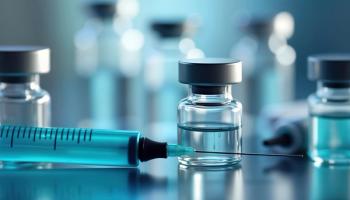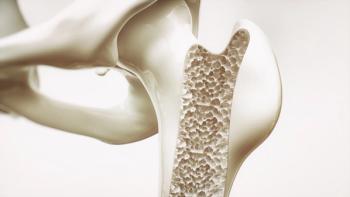
Payer Perspective: Incentives For Biosimilars and Formulary Access
Savings and incentives associated with the utilization of biosimilars and unbranded biologics, including a look at how it impacts formulary access.
Episodes in this series

Timothy O’Shea, PharmD, MS:The savings potential of driving to biosimilars can be significant. On average, we’re looking at [approximately] a 15% to 20% lower net cost when it comes to a biosimilar compared with [the] originator product. So we’re not at the level of a brand-to-generic discount, although this represents significant savings. The analysis by IQVIA recently looked at the impact of biosimilar savings in the United States, and what they said was that over the past 5 years, there have been over $40 billion in savings from use of biosimilars. And they expect that over the next 5 years, that will increase to over $180 billion. That’s driven in large part by the Humira biosimilars as well as some of the biosimilars in the pipeline. The other thing that we’re seeing is that competition from biosimilars is resulting in lower ASP, average sale price, of both biosimilars and the originator products. So if we look at these on a graph over time, what we see is declining prices from the competition. So even the biosimilars that we have today in many cases [have] lower costs than they [did] several years ago. And we’re also seeing the decline in ASP of the originator product, which is good because even if someone’s not switching to a biosimilar, you’re still seeing that lower net price and thinking about overall health care, many things in health care where we see that degree of steady decline in prices. The one thing that is important, though, when we talk about cost savings of biosimilars is that we ask the question, “Who’s seeing the benefit of those savings? Who are among the stakeholders of patients, payers, and providers?” And from a patient perspective, those with a co-pay benefit design, where they’re paying a flat co-pay dollar amount, typically may not see immediate cost savings. If you’re on an originator product [and a] biosimilar comes to market, these may be in the same tier, so you may end up paying the same amount. Those with a coinsurance benefit design, when you’re paying a percentage of the drug cost, may see some benefit because you’re paying a percentage of the lower cost. There may be some cost savings. What I’ve seen in this space is that many patients are going to hit maximum out-of-pocket costs, whether on a biosimilar or a biologic, because even a biosimilar is quite expensive. And once you hit your maximum out-of-pocket costs, you’re not paying anything for additional out-of-pocket costs for the remainder of the year. So although you may hit your maximum out-of-pocket [cost] a little later on a biosimilar than originator product, the net difference over the course of a year may be negligible. From a payer perspective, that’s a little more obvious. Payers are seeing the benefits of biosimilars, and that goes a long way into promoting affordability and goes into premiums, which will have [an] impact on patients and the employer groups by which payers are managing on the commercial side. For providers, that one’s a little less obvious. So what’s the incentive for providers to use biosimilars? And this is a great example as we’re moving towards more value-based models. We’re changing how we pay for health care, right? We’re moving away from fee-for-service models where we’re paying, reimbursing for the number of services being billed to now value-based reimbursement, quality reimbursement to reimbursing based on the quality of care being delivered. So if you’re in a value-based model, let’s say you’re an accountable care organization or you’re enrolled in some type of episode-of-care program, you’re going to be accountable for the total cost of care. And biosimilars are a great example where we can help lower the total cost of care. And these models are based on shared savings. So there can be a clear incentive to the providers or provider groups.
Formulary access is going to have an impact on which product is preferred by a certain payer. So there’s access, [but] it’s a question of access to which product, which is the preferred product, and that will certainly vary payer by payer and vary category by category. What we see is uptake of biosimilars increased significantly since many of these biosimilars were first approved. We see biosimilar market share in excess of 60%, 70%, 80%. [When we look] at individual payers, there are plenty of examples of payers that have driven market share of biosimilars in the 80%, 90%, 95% range and the specific strategies to drive use of biosimilars. It will vary payer by payer. Some will have parity access stances where everything’s on an equal playing field, everything’s covered equally. Some will have a preferred product strategy where you may have 1 or more biosimilars preferred. Sometimes you have multiple biosimilars preferred, sometimes you can have an originator product with a biosimilar or two preferred, and some have looked at waiving out-of-pocket costs for biosimilars as a means to further encourage their use. Some payers have looked at removing prior authorization requirements for biosimilars as a way of encouraging their use. And then there’s the consideration of preferring use of biosimilars for new vs existing patients. So imagine you have a category where you have new biosimilars. A payer may implement a prior authorization or criteria that require new patients use the biosimilar, and that’s seamless. Some have gone above that to say that even existing patients must use that, and that would require them to switch. That’s certainly the more aggressive stance, a little more friction in doing so, but that’s going to increase use of biosimilars even further.
Transcript is AI generated and edited for clarity and readability.
Newsletter
Get the latest industry news, event updates, and more from Managed healthcare Executive.






















































